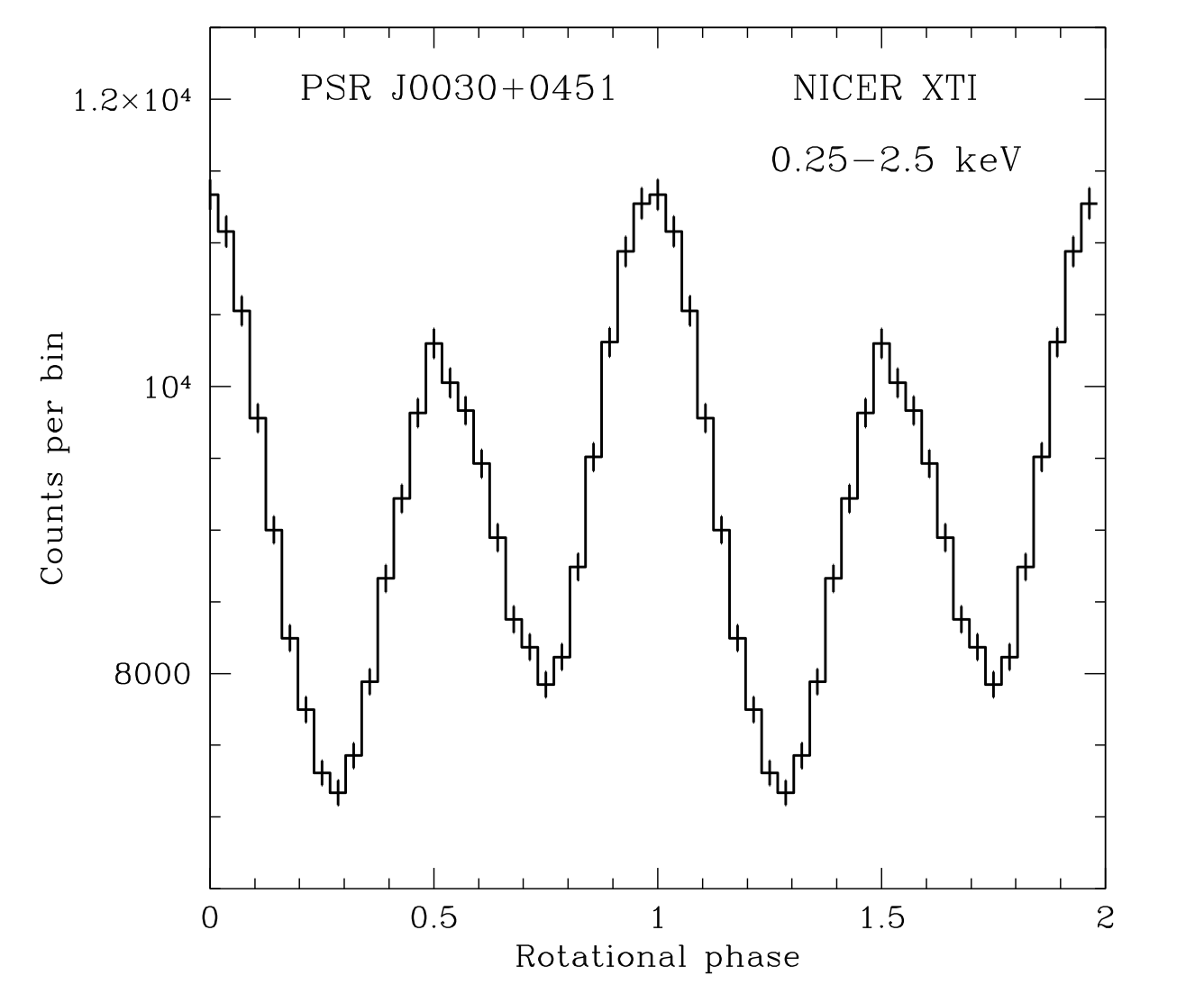NICER / ISS Science Nugget for October 6, 2017Pulsar J0030+0451 Light Curve Collected by NICEROne of NICER's Level-1 Science requirements is to make measurements of neutron star radii to ±5% accuracy, representing an order-of-magnitude improvement over our current knowledge of the sizes of neutron stars. "Lightcurve modeling" is a key method that NICER employs. Rapidly spinning, or strongly magnetic, neutron stars are hotter at their magnetic poles, for reasons similar to those that generate aurorae (Northern and Southern Lights) here on Earth: particle radiation streaming down along magnetic field lines. As the stars spin – sometimes hundreds of times per second – the magnetic-pole hot spots rotate in and out of our view so that these neutron stars, appearing to pulse, come to be known as "pulsars." Modeling lightcurves (the modulation profiles of the pulses) makes use of the fact that a neutron star's gravity is strong enough to bend the trajectory of light; the magnitude of light-bending is a function of the ratio of the star's mass to its radius (M/R). For pulsars, this means that when a hot spot is on the far side of the star (in other circumstances invisible to us), the bending of light in strong gravity enables us to see a portion of its emissions. The basic effect is to change the depth of modulation of the pulses we see from spinning neutron stars. Lightcurve modeling exploits this fact to infer the M/R ratio, enabling us to determine radius when coupled with information about the star's mass. To achieve 5% accuracy, we require very high signal-to-noise lightcurves. The figure below shows the lightcurve for a 300,000 sec exposure of the pulsar known as J0030+0451, which rotates almost 206 times each second, accumulated so far by NICER. This is a factor of 7 higher in quality than the previous-best X-ray lightcurve for this pulsar. Another 1.2 million seconds of exposure is needed to achieve the 5% radius measurement goal for this pulsar. NICER continues to accumulate data toward that end, on this and several other neutron stars.
NICER
|



